No products in the cart.
LET'S CLEANSE YOUR AIR TOGETHER
Book a complimentary consultation with a member of our team, below. Two minutes of your time leads to better health for you and your family.
Let’s learn what’s in your dust and how it could be impacting your health.
Dust is essentially a layer of combined particles from indoor and outdoor sources. Some of the common culprits include skin cells, pollen, dirt, pet dander, and more. Over time, these particles build up and form that staple layer of visible “stuff” on the surfaces throughout your home.
No one wants their home to be known as “the dusty place” that makes everyone sneeze! Having a constant layer of grime isn’t just icky; it can lower the indoor air quality of a home.
Gravity brings particles like mold spores, mycotoxins, and endotoxins down to horizontal surfaces like floors, doorframes, and furniture. So basically, where dust collects, so do these indoor contaminants.
The more dust there is in a home, the more of these microscopic particles there are as well. When this layer of particulate matter gets kicked up into the air, it will lower the indoor air quality of the space and allow contaminants like mold spores, mycotoxins, and bacteria to enter our bodies through inhalation.
The longer someone spends inside an indoor environment with particle-filled air, the greater the level of exposure they will face. This can trigger a long list of potential adverse health reactions.
Determining if there’s a problem that needs to be addressed can be the difficult part. The particles themselves are microscopic, making them invisible to the naked eye. And not all microbial growth is apparent. It can be hidden in places like behind the wall or inside the HVAC.
Dust is essentially a layer of combined particles from indoor and outdoor sources. Some of the common culprits include skin cells, pollen, dirt, pet dander, and more. Over time, these particles build up and form that staple layer of visible “stuff” on the surfaces throughout your home.
No one wants their home to be known as “the dusty place” that makes everyone sneeze! Having a constant layer of grime isn’t just icky; it can lower the indoor air quality of a home.
Gravity brings particles like mold spores, mycotoxins, and endotoxins down to horizontal surfaces like floors, doorframes, and furniture. So basically, where dust collects, so do these indoor contaminants.
The more dust there is in a home, the more of these microscopic particles there are as well. When this layer of particulate matter gets kicked up into the air, it will lower the indoor air quality of the space and allow contaminants like mold spores, mycotoxins, and bacteria to enter our bodies through inhalation.
The longer someone spends inside an indoor environment with particle-filled air, the greater the level of exposure they will face. This can trigger a long list of potential adverse health reactions.
Determining if there’s a problem that needs to be addressed can be the difficult part. The particles themselves are microscopic, making them invisible to the naked eye. And not all microbial growth is apparent. It can be hidden in places like behind the wall or inside the HVAC.
That’s where The Dust Test comes into play. This kit can help determine if there are high levels of contamination within a home before you spend lots of money trying to find one (both medically and in the indoor environment).
Here’s how it works: Again, microscopic contaminants will collect where dust collects. Testing and analyzing indoor dust will help determine what’s hanging out in your home. If there are high levels of contamination, you can use the results as the foundation for the next steps of the process.
The data collected will create a roadmap for the inspector and give you the ability to say, "Please help me find where these contaminants are coming from." From there, the remediation team should have all the information needed to properly remove all of the sources of contamination in the home and ensure it’s a healthy space.
If there are no high levels of contaminants, you will have peace of mind knowing that your indoor environment is safe.

Here are a few issues that could be leading to a dusty home.
Air filters are the first line of defense for the HVAC system and indoor air. They help eliminate dust and contaminants so that they don’t continue to circulate throughout the indoor space. If they’re past their time to be replaced, chances are that they’re packed full of all sorts of particles. This will affect their ability to filter, leading to increased levels of particles like dust and lower indoor air quality. It can also put a strain on the HVAC system as it works overtime to pull air through the clogged filters.
If the HVAC is not cycling the air in your home, it’s not actively eliminating particles like dust, allowing them to continue to build up inside. This could be from improper maintenance or a system that is not equipped for the home.
When mold growth occurs, it releases microscopic spores into the surrounding area. These will attach to dust and settle on horizontal surfaces, adding to that visible layer of “stuff.” The longer the colony is present inside, the more spores it will release, increasing the particle count inside and polluting the indoor environment. Some species of mold can also create microscopic toxins called mycotoxins, further contributing to the level of particles. Finally, bacteria can often be found growing right alongside dust, adding to the contamination present.
We can’t exactly put a bubble around our houses, so particles like dust, allergens, mold spores, and mycotoxins will inevitably blow inside. It’s up to us to actively work to keep particle levels low. Lack of cleaning or using cleaning products that do not actually remove particles allows that layer of dust to build up over time.
Actively removing particles like dust from your indoor environment will not only promote healthier indoor air quality but also reduce the opportunities for microbial growth to develop. As the saying goes, “An ounce of prevention is worth a pound of cure.”
Set up a daily, weekly, monthly, and seasonal cleaning schedule to keep your home as dust-free as possible.
Use a damp microfiber cloth on surfaces throughout the home. Microfiber cloths are an invaluable power tool when it comes to cleaning homes and eliminating tiny particles from your space. In fact, they are 100 times more effective than regular rags at wiping away microscopic particles.
Another great option for removing dust is a HEPA vacuum cleaner, particularly for porous surfaces. To reach the EPA standard and be qualified as a HEPA filter, they must filter out 99.7% of particles that pass through that are 0.3 microns in size. That means that these machines can remove dust as well as other small particles like mold spores.
Finally, wash all porous items with a botanical laundry additive like EC3. This will help remove microscopic particles from the surface so they don’t continue to build up.
Ultimately, the goal is to clean as deeply and thoroughly as possible. Make sure to tackle all of the spaces that don’t get a ton of attention during regular cleaning. This can include the tops of door frames, cabinetry, wall decor, behind kitchen appliances, and all of the hard-to-reach places. Another great step is to pull out the appliances and clean behind them. Essentially, focus on anything that’s not often seen because these can collect a layer of dust over time.
We offer customized packages to meet all of your cleaning needs, especially for that ultimate deep clean. These carefully crafted kits are packed full of products that will help you succeed on your home health journey. Those of us at HomeCleanse stand by and use each and every one of these tools to create safe indoor environments for our clients.
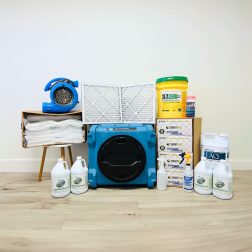
All the equipment and materials we use to remediate your home, plus consultation and support...
-
$5,995.00 – $9,995.00 SHOP NOW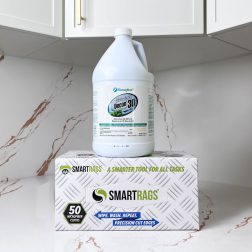
Remove harmful pollutants that accumulate in the dust of your home. (Options available for renters...
-
$99.00 – $349.00 SHOP NOW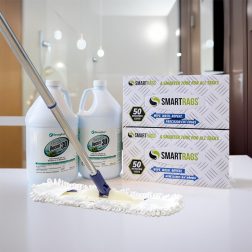
Take your cleaning to the next level buying all the tools we use to keep...
-
$299.00 – $549.00 SHOP NOWAir purifiers help to remove airborne particles like dust and mold so that they’re not circulating through our indoor spaces and making their way into our bodies. Not all air purifiers are built the same, though. You want to go with a unit that removes the maximum number of contaminants possible.
We suggest Intellipure products. Their purifiers utilize their patented DFS technology to remove up to 99.99% of particles as small as 0.007 microns. Whether it’s particulate matter from wildfires or mold spores, these purifiers are equipped to filter them from your air.
The best option is to invest in a whole-home air purifier. These systems are installed at the home’s point of entry and will effectively remove contaminants from the air so that the HVAC system can run efficiently. This filters out particles for the entire home, eliminating the space requirements that smaller units have. As an added bonus, they also offer a layer of protection for the HVAC itself by eliminating contaminants before they enter the system.
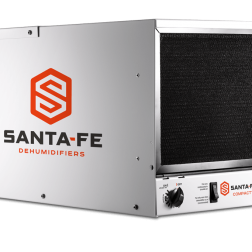
Small in stature, big on performance the Santa Fe dehumidifier is a powerful yet space-saving...
-
$1,415.00 SHOP NOW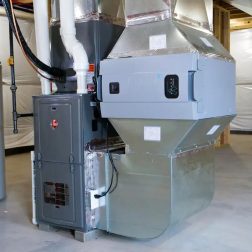
Turn your HVAC into a filtration system, removing 99% of ultrafine particles including airborne mold,...
-
$2,000.00 – $2,995.00 SHOP NOW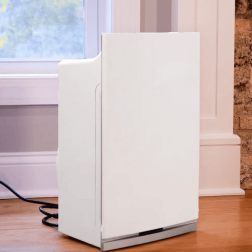
Small in size, but delivers powerful results, reducing airborne microorganisms like mold, viruses, and bacteria.
-
Original price was: $549.00.$199.00Current price is: $199.00. SHOP NOWAgain, if air filters are past their time to be replaced, chances are that they’re packed full of all sorts of particles. This will affect their ability to filter out particles like dust, leading to lower indoor air quality. It can also put a strain on the HVAC system as it works overtime to pull air through the clogged filters.
Switching to the highest-rated MERV filters possible for the specific HVAC system is a phenomenal way to improve indoor air quality and decrease dust. You want filters with the technology to actually eliminate them from the air. Otherwise, they’ll just circulate straight back into the home, creating a dirtier and unhealthy environment.
The HVAC acts as the lungs of the home. Improper maintenance can affect the system’s ability to cleanse your air of particles like dust. Servicing the HVAC system bi-annually can help avoid this issue as well as further contamination issues such as mold growth in the system.
The more belongings we have, the more surfaces there are for dust to collect, and the harder it is to properly clean a home. Every year, we should evaluate our belongings and ask ourselves if we truly use each item before deciding whether to ultimately keep it or move on from it. Doing so will stop dust from collecting and harboring on our belongings, which ultimately translates to cleaner indoor air quality and improved wellness.
This issue doesn’t receive a lot of attention, which means you probably have questions. You’re not alone!
Schedule a free consultation with us today to go over any concerns you may have. Whether you’re not sure where to start after The Dust Test indicated a current source of mold, have questions on how to maintain a safe environment after remediation, or want to craft a unique prevention plan for your home, we’ve got you covered.